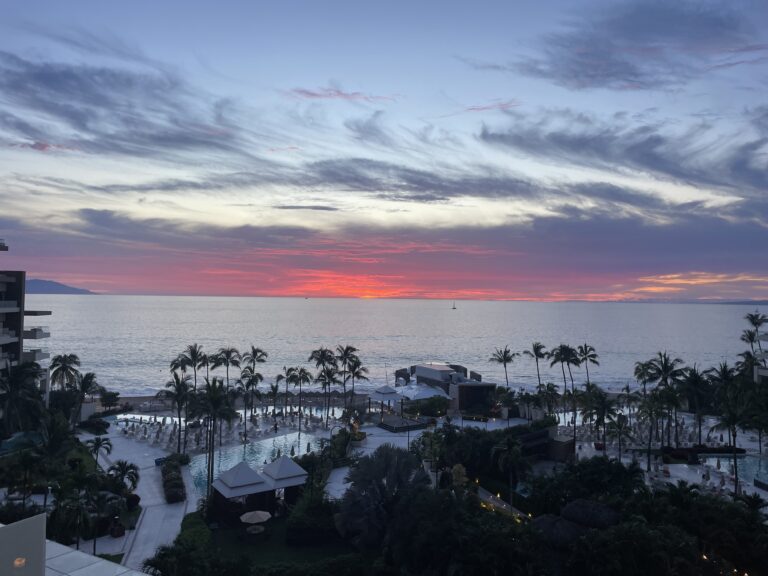
Most visitors flock to Vail during one season (winter) for one thing (snow sports), and with good reason. The largest single-mountain ski resort in North America—with annual snowfall of up to 30 ft/9 m of light, dry powder—boasts a whopping 5,317 acres/2,141 hectares of terrain with 31 high-speed lifts and 275 days of sunshine each year. It's no wonder Vail is a mecca for downhill skiers and snowboarders.
But there is more than snow sports in the Bavarian-style alpine village, where horse-drawn carriages meander down pedestrian-friendly streets, and the shopping and dining are world-class.
Summer, packed with sports and festivals, is a wonderful time to visit. Vail's perch at 8,150 ft/2,527 m above sea level in the Rocky Mountains makes it a retreat from the heat of lower elevations. Warmer weather (generally June-September) also allows more recreational options—golfing, rafting, hiking, biking, horseback riding—and as many concerts and cultural choices as there are during the winter.
Unlike many other Colorado ski resorts, Vail does not have much mining-town mystique. The town, which is 100 mi/160 km west of Denver, grew out of an empty sheep pasture in the early 1960s and was later bisected by a four-lane interstate. Much of the town's architecture reflects the sometimes-regrettable ski-area style of the 1970s and '80s.
Interstate 70 still cleaves right through the valley, a loud, dirty eyesore that Vail officials have talked about burying or building a dome over. Until that day, though, it's easy to forget the highway is there, especially when you are overtaken by the Tyrolean charm of Vail Village that helps compensate for the town's lack of history. And though Vail doesn't attract Hollywood stars the way Aspen does, some see that as a plus.
Must See or Do
Sights—A summer drive on Shrine Pass Road for a scenic ride to Red Cliff; a ride on the Eagle Bahn Gondola (No. 19) to Eagle's Nest on Vail Mountain
Museums—Colorado Ski Museum's snowboarding exhibit; a tour of Vail Nature Center and the farmhouse.
Memorable Meals—Sumptuous chicken and pheasant potpie at The 10th ski-in restaurant in Mid-Vail; an intimate French dinner at Left Bank; an Eaton Ranch beef burger topped with sugar-cured bacon and cheddar cheese at Bol, eaten in between strikes and spares.
Late Night—Relaxing with a more sedate crowd at Tavern on the Square.
Walks—Gore Creek Trail, an outdoor pedestrian and bicycle path that follows the creek the entire length of Vail; a walk through Vail Farmers' Market and Art Show—complete with live jazz—on summer Sundays.
Especially for Kids—Free outdoor movies in summer; bungee-trampoline jumping at Vail's Adventure Ridge (where they can go tubing in winter); summer ice skating at the Black Family Ice Rink in Beaver Creek; bowling at Bol.
Geography
Vail sits in Eagle County, 81% of which is protected forestland. The view from the top of Vail Mountain (11,570 ft/3,586 m, accessible by lifts) is spectacular. To the south, you can see Mount of the Holy Cross, a 14,500-ft/4,495-m peak named for the cross of snow formed in the mountain's deep crevices each winter. Look down and you'll see Vail Mountain's magnificent skiing bowls. Legend says the bowls were created when the original inhabitants of Eagle River Valley, the Ute tribe, set fire to the mountain to protest being forced out by white settlers. (It's likely the back bowls were the result of lightning-strike fires.)
Street-level Vail affords dramatic views of the Gore Range, a series of jagged peaks soaring to more than 13,000 ft/4,030 m in the northeast. Flowing from the range is Gore Creek, which meanders through Vail and is easily explored, thanks to a walking path along its banks.
The town of Vail has three areas. For visitors, Golden Peak is the least significant, though its dining and shopping opportunities are expanding. Lionshead, done in an Austrian-inspired style, offers favorite local restaurants and a range of shopping from luxury goods to outdoor brands. Vail Village, the still-quaint original town center, offers gracious lodging, trendy boutiques and fine restaurants along Bridge Street and Gore Creek. The village also is the town's main entry point. There is a large parking structure and mountain access provided by Vista Bahn Chairlift.
There's not a single stoplight in Vail, but roundabouts guide drivers (and cyclists and runners) into town at the entry points. Outlying neighborhoods (consisting mostly of condominiums) include East Vail (connected to the village by Vail Golf Course), West Vail, Red Sandstone, Matterhorn and Intermountain.
History
Vail's history starts, naturally, with skiing. Resort founder Peter Seibert was a member of the U.S. Army's 10th Mountain Division, the elite ski troopers who trained at nearby Camp Hale and fought in the mountains of Italy against Germans in World War II. Seibert was seriously wounded during the war, but recovered, returned to his passion of skiing and began thinking about opening a resort. In the late 1950s, on a tip from a local uranium prospector, Seibert climbed what would become the front side of Vail Mountain. With a team of investors, Seibert and the prospector, Earl Eaton, opened Vail for skiing in 1962—just one year after the land was cleared and permits were purchased.
Quickly, a village complete with restaurants, hotels and stores began to spring up around the resort. The town of Vail was incorporated in 1966. A few years later, Vail would become known as U.S. President Gerald Ford's Western White House, and he maintained a home in Vail Valley until his death in December 2006. Today, Vail is one of the largest ski resort in the U.S.
Seibert left the resort he founded after a gondola crash killed four people in 1976, but the area continued to grow. In the 1980s, owner George Gillett expanded the resort's legendary back bowls (wide-open, nearly treeless basins on the backside of Vail Mountain that are ideal for deep-powder skiing) and landed the 1989 World Alpine Ski Championships. The races cemented Vail as a top destination, particularly among European ski-racing fans.
During the 1990s, Vail Resort became a publicly traded mega-company, acquiring nearby ski areas (Breckenridge, Keystone and sister resort Beaver Creek) and diversifying into lodging, restaurants and golf courses. The town began to spread down the valley along the Eagle River. The ski area grew, too, adding bowl skiing deeper in the backcountry—a move that drew the ire of environmentalists who burned several buildings and damaged chairlifts to protest the expansion into wildlife habitat.
In the early 2000s, Vail Resorts and local businesses embarked on a billion-dollar revitalization project. Remodeling of many lodging rooms was completed, new rooms were added, and streetscape improvements included such perks as heated sidewalks, fire pits, an enlarged Lionshead skier bridge and parking structures. On the slopes, old ski lifts were replaced with high-speed quads to some of the best mogul terrain on the mountain.
Potpourri
Vail Mountain is run on 100% wind power, and the town has committed to using 100% wind power for its facilities as well.
There may be 1.75 million visitors a year, but the terrain at Vail is so vast that there are rarely more than four skiers per acre/0.5 hectare.
Nine riddles are carved into the sidewalk on Wall Street in Vail Village. They're a great way to keep kids busy on the way to dinner.
One of Vail's firefighters, Ryan Sutter, met his wife, Trista, on the reality show The Bachelorette.
Vail served as the Western White House 1974-77 while U.S. President Gerald Ford was in office. The Ford family began vacationing in Vail in the late 1960s and bought one of the first homes at Beaver Creek in 1982.



































